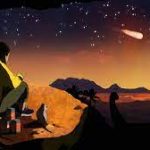How to Survive a Killer Asteroid0
- From Around the Web, Space
- April 12, 2021
The impact that wiped out the dinosaurs would probably have killed you too—unless you were in the exact right place and had made the exact right plans.

The impact that wiped out the dinosaurs would probably have killed you too—unless you were in the exact right place and had made the exact right plans.

A 6-mile-wide space rock and colossal eruptions racked Earth at the same fateful moment. Scientists have tried for decades to determine the primary suspect behind the Cretaceous Extinction.

Chunk of space rock was once the ‘poster child for hazardous asteroids’ but it will be a while before humans need to worry about it again

Earth’s second moon will make a close approach to the planet next week before drifting off into space, never to be seen again.

Scientists have been greeted by the sight of jet black chunks of rock and soil from an asteroid after opening a capsule that returned from deep space a week ago.

Samples of an asteroid 300 million km from Earth arrived in Japan on Tuesday to applause and smiles, the climax of a six-year odyssey by a space probe pursuing the origins of life.

Japanese space officials said they are excited about the return of a capsule that landed safely in the Australian Outback on Sunday while carrying soil samples from a distant asteroid, and that they are eager to begin analyzing the “treasure” inside.

How does a space rock make such an impressive display of shooting stars?

At least eight asteroid missions are underway or coming soon, a recogntion of these objects’ scientific fascination—and their potential danger.

In a new paper published in the Astronomical Journal, astronomers from the United States, Canada and Europe provide a detailed characterization of the physical properties and orbital evolution of the asteroid 2020 CD3 — Earth’s second discovered temporary natural satellite, or minimoon. Their results prove that 2020 CD3 is a natural body and not some relic piece of human-made space junk.